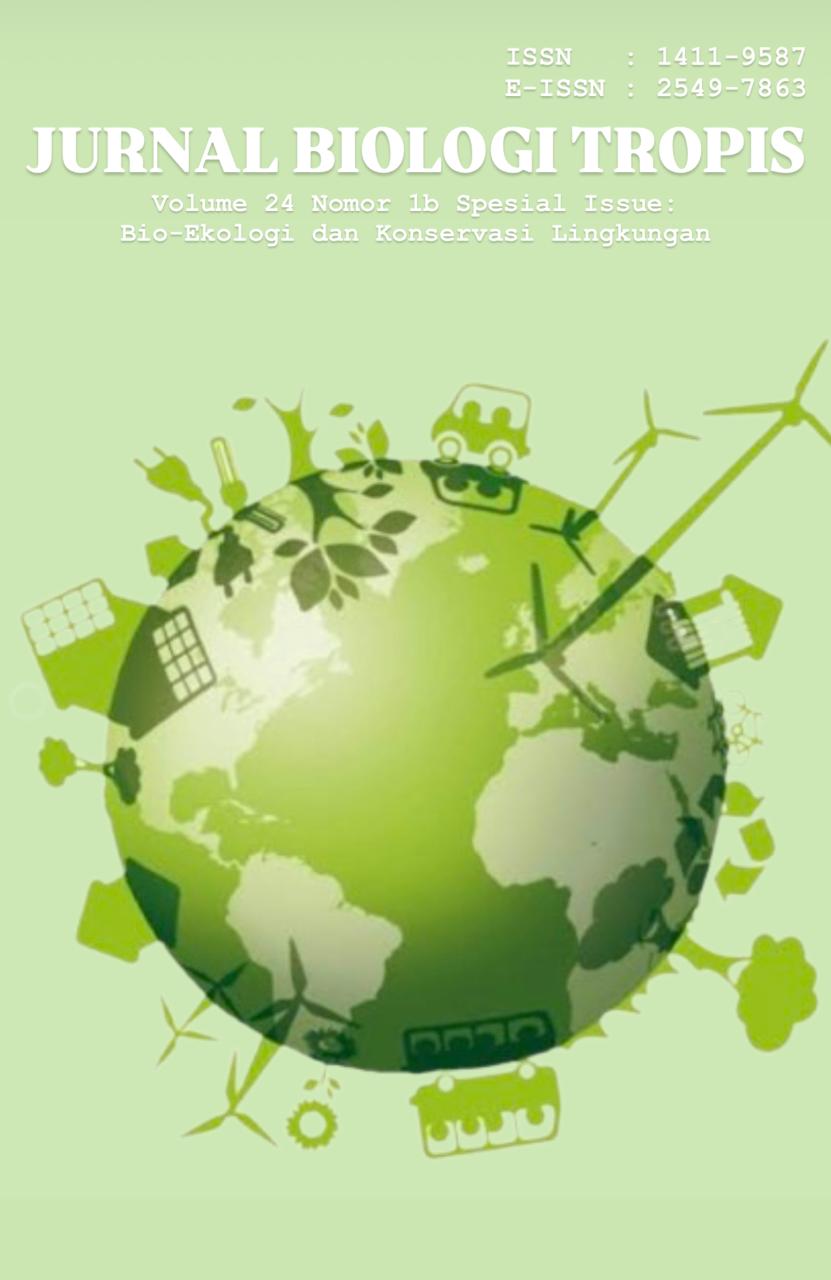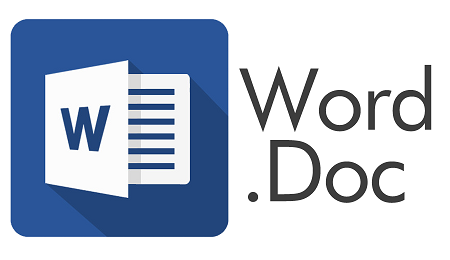Management Strategies for Maize Cultivation in Drylands through Soil Tillage Techniques and Fertilizer Efficiency
Authors
Pervitara Arum Dewi , Mulyati Mulyati , Suwardji SuwardjiDOI:
10.29303/jbt.v24i2b.8117Published:
2024-12-19Issue:
Vol. 24 No. 2b (2024): Special IssueKeywords:
Dryland, fertilizer, maize cultivation, tillage techniques.Articles
Downloads
How to Cite
Downloads
Metrics
Abstract
Dryland in Indonesia covers approximately 75.6% of the total land area, with a significant portion utilized for agriculture, including maize cultivation. However, the main challenge in maize farming on dryland is the low organic matter content and soil fertility, which can affect growth and yield. This study aims to review various soil tillage techniques and the application of both organic and inorganic fertilizers in maize cultivation on dryland. The soil tillage techniques examined include no-tillage, minimum tillage, and intensive tillage, focusing on fertilization efficiency and the sustainability of land management practices. The methodology employed was a literature review, analyzing publications indexed in SINTA and/or Scopus between 2019 and 2024. The results of the study indicate that the minimum tillage treatment provided the best results, with phosphorus availability of 17.55 mg/kg, potassium of 0.78 cmol/kg, and an increase in organic carbon to 2.44%, along with a slightly alkaline soil pH of 7.65. Minimum tillage was found to be effective in improving soil fertility without causing significant changes in pH, making it the best option for sustainable maize cultivation on dryland.
References
Agsari, D., Utomo, M., Hidayat, K. F., & Niswati, A. (2020). Respon Serapan Hara Makro-Mikro dan Produksi Tanaman Jagung (Zea mays L.) Terhadap Pemupukan Nitrogen dan Praktik Olah Tanah Jangka Panjang. Journal of Tropical Upland Resources (J. Trop. Upland Res.), 2(1), 46–59. https://doi.org/10.23960/jtur.vol2no1.2020.78
Astiko, W., Ernawati, N. M. L., & Putu Silawibawa, I. (2023). Impact of different soil tillage added bio-Ameliorant on nutrient concentration and growth maize-soybean intercropping adaptive to climate change in dry land. E3S Web of Conferences, 1–6. https://doi.org/10.1051/e3sconf/202346701001
Aviva, S. N. (2023). Pengaruh Olah Tanah dan Pemupukan N Jangka Panjang terhadap P-Terpanen dan Produksi Tanaman Kacang Hijau (Vigna Radiata L.) Tahun Ke-35. Universitas Lampung.
BRIN. (2024). Optimasi SDG Lokal Tanaman Pangan Lahan Kering di Indonesia. https://brin.go.id/orpp/posts/kabar/optimasi-sdg-lokal-tanaman-pangan-lahan-kering-di-indonesia
Ćirić, V., Prekop, N., Šeremešić, S., Vojnov, B., Pejić, B., Radovanović, D., & Marinković, D. (2023). The Implication of Cation Exchange Capacity (Cec) Assessment for Soil Quality Management and Improvement. Agriculture and Forestry, 69(4), 113–134. https://doi.org/10.17707/AgricultForest.69.4.08
Dai, Z., Hu, J., Fan, J., Fu, W., Wang, H., & Hao, M. (2021). No-tillage with mulching improves maize yield in dryland farming through regulating soil temperature, water and nitrate-N. Agriculture, Ecosystems and Environment. https://doi.org/10.1016/j.agee.2020.107288
Dong, L., Han, X., Zheng, J., Liu, X., Liu, Z., Luo, Y., Shao, X., Wang, Y., & Wang, L. (2022). Long-term no-tillage enhanced maize yield and potassium use efficiency under spring drought year. Chilean Journal of Agricultural Research, 82(4), 564–574. https://doi.org/10.4067/S0718-58392022000400564
Fadillah, N., Utomo, M., Afrianti, N. A., & Sarno, S. (2022). Perubahan Sifat Kimia Tanah pada Profil Tanah Akibat Penerapan Sistem Olah Tanah dan Pemupukan N Jangka Panjang pada Lahan Pertanaman Jagung (Zea Mays L.) di Kebun Percobaan Politeknik Negeri Lampung. Jurnal Agrotek Tropika, 10(4), 627–632. https://doi.org/10.23960/jat.v10i4.6465
Fiorini, A., Boselli, R., Maris, S. C., Santelli, S., Ardenti, F., Capra, F., & Tabaglio, V. (2020). May conservation tillage enhance soil C and N accumulation without decreasing yield in intensive irrigated croplands? Results from an eight-year maize monoculture. Agriculture, Ecosystems and Environment, 296. https://doi.org/10.1016/j.agee.2020.106926
Githongo, M. W., Kiboi, M. N., Ngetich, F. K., Musafiri, C. M., Muriuki, A., & Fliessbach, A. (2021). The effect of minimum tillage and animal manure on maize yields and soil organic carbon in sub-Saharan Africa: A meta-analysis. Environmental Challenges, 5, 1–9. https://doi.org/10.1016/j.envc.2021.100340
Hasibuan, S., Hutapea, S., & Mardiana, S. (2022). Pengaruh Pengolahan Tanah dan Pemberian Mulsa Organik Terhadap Kesuburan Tanah dan Hasil Produksi Jagung Manis (Zea mays saccaharata Strut L). Jurnal Ilmiah Pertanian (JIPERTA), 4(2), 111–123. https://doi.org/10.31289/jiperta.v4i2.1382
Jambak, M. K. F. A., Baskoro, D. P. T., & Wahjunie, E. D. (2017). Characteristics of Soil Physic on Soil Conservation Tillage System (Case Study Of Cikabayan Research Farm, Bogor). Soil and Land Bulletin, 1(1), 44–50.
Johan, P. D., Ahmed, O. H., Omar, L., & Hasbullah, N. A. (2021). Phosphorus transformation in soils following co-application of charcoal and wood ash. Agronomy, 11(10), 1–25. https://doi.org/10.3390/agronomy11102010
Kang, B. T., Moody, K., & Adesina, J. O. (1980). Effects of fertilizer and weeding in no-tillage and tilled maize. Fertilizer Research, 1, 87–93. https://doi.org/10.1007/BF01073180
Kiboi, M. N., Ngetich, K. F., Fliessbach, A., Muriuki, A., & Mugendi, D. N. (2019). Soil fertility inputs and tillage influence on maize crop performance and soil water content in the Central Highlands of Kenya. Agricultural Water Management, 217, 316–331. https://doi.org/10.1016/j.agwat.2019.03.014
Liu, C., Han, X., Chen, X., Yan, J., Lu, X., Song, B., Wang, W., Zou, W., & Ma, X. (2024). Inversion Tillage Combined with Organic Fertilizer Application Increased Maize Yield via Improving Soil Pore Structure and Enzymatic Activity in Haplic Chernozem. Agronomy, 14(5), 1–14. https://doi.org/10.3390/agronomy14050927
Lumbanraja, R., Lumbanraja, J., Norvpriansyah, H., & Utomo, M. (2020). Perilaku Pertukaran Kalium (K) dalam Tanah, K Terangkut serta Produksi Jagung (Zea mays L.) Akibat Olah Tanah dan Pemupukan di Tanah Ultisol Gedung Meneng pada Musim Tanam Ketiga. Journal of Tropical Upland Resources (J. Trop. Upland Res.), 2(1), 1–15. https://doi.org/10.23960/jtur.vol2no1.2020.69
Matheus, R., Basri, M., Rompon, M. S., & Neonufa, N. (2017). Strategi Pengelolaan Pertanian Lahan Kering dalam Meningkatkan Ketahanan Pangan di Nusa Tenggrara Timur. PARTNER. https://doi.org/10.35726/jp.v22i2.246
Preston, C. (2019). Soil pH Effects on Potassium and Phosphorus Fertilizer Availability and Management. https://nutrien-ekonomics.com/news/soil-ph-effects-potassium-and-phosphorus-fertilizer-availability-and-management/
Rahwuni, A., Lumbanraja, J., Norvpriansyah, H., Utomo, D. M., Agroteknologi, J., Pertanian, F., & Lampung, U. (2020). Pengaruh Olah Tanah dan Pemupukan terhadap Stabilitas Agregat Tanah dan Biomassa Akar dalam Tanah pada Pertanaman Jagung (Zea mays L.) di Lahan Kering Gedung Meneng pada Musim Tanam Ke-3 Effect of Tillage and Fertilizers on Stability of Soil Aggregate and. Journal of Tropical Upland Resources ISSN, 02(02), 276–286.
Rosolem, C. A., & Steiner, F. (2017). Effects of soil texture and rates of K input on potassium balance in tropical soil. European Journal of Soil Science, 68(5), 658–666. https://doi.org/10.1111/ejss.12460
Sitorus, A., Kotta, N. R. E., & Hosang, E. Y. (2020). Keragaan Pertumbuhan dan Produksi Jagung Hibrida pada Agroekosistem Lahan Kering Iklim Kering Nusa Tenggara Timur. Seminar Nasional Lahan Suboptimal Ke-8 “Komoditas Sumber Pangan Untuk Meningkatkan Kualitas Kesehatan Di Era Pandemi Covid-19,” 1–11.
Teressa, D., Kibret, K., Dechasa, N., & Wogi, L. (2024). Soil properties and nutrient uptake of maize (Zea mays) as influenced by mixed manure and blended inorganic fertilizer in Haramaya district, eastern Ethiopia. Heliyon, 10(16), 1–21. https://doi.org/10.1016/j.heliyon.2024.e35784
Tolessa, D., Preez, C. C. Du, & Ceronio, G. M. (2007). Effect of tillage system and nitrogen fertilization on yield and yield components of maize in Western Ethiopia. South African Journal of Plant and Soil, 24(2), 63–69. https://doi.org/10.1080/02571862.2007.10634783
Ustiatik, R., Ariska, A. P., Ramadhan, R. K., Aziz, N. R., Hadi, R. I., Yusuf, R. M., Pujo, A., Vista, M., Rinandy, P., Hidayat, T., Nugroho, W. A., & Kurniawan, S. (2024). Bio - physico - chemical Soil Characteristic : Intensive Tillage vs No Tillage. Jurnal Teknik Pertanian Lampung, 13(4), 1196–1205.
Yu, Q., Xu, L., Wang, M., Xu, S., Sun, W., Yang, J., Shi, Y., Shi, X., & Xie, X. (2022). Decreased soil aggregation and reduced soil organic carbon activity in conventional vegetable fields converted from paddy fields. European Journal of Soil Science, 73, 1–12. https://doi.org/10.1111/ejss.13222
Zhang, Y., Xie, D., Ni, J., & Zeng, X. (2020). Conservation tillage practices reduce nitrogen losses in the sloping upland of the Three Gorges Reservoir area: No-till is better than mulch-till. Agriculture, Ecosystems and Environment, 300. https://doi.org/10.1016/j.agee.2020.107003
Zheng, Y., Liu, X., Cai, Y., Shao, Q., Zhu, W., & Lin, X. (2022). Combined intensive management of fertilization, tillage, and organic material mulching regulate soil bacterial communities and functional capacities by altering soil potassium and pH in a Moso bamboo forest. Frontiers in Microbiology, 13, 1–17. https://doi.org/10.3389/fmicb.2022.944874
Zhou, J., Sun, T., Shi, L., Kurganova, I., Lopes de Gerenyu, V., Kalinina, O., Giani, L., & Kuzyakov, Y. (2023). Organic carbon accumulation and microbial activities in arable soils after abandonment: A chronosequence study. Geoderma, 435, 1–10. https://doi.org/10.1016/j.geoderma.2023.116496
License
Copyright (c) 2024 Pervitara Arum Dewi, Mulyati Mulyati, Suwardji Suwardji

This work is licensed under a Creative Commons Attribution 4.0 International License.

Jurnal Biologi Tropis is licensed under a Creative Commons Attribution 4.0 International License.
The copyright of the received article shall be assigned to the author as the owner of the paper. The intended copyright includes the right to publish the article in various forms (including reprints). The journal maintains the publishing rights to the published articles.
Authors are permitted to disseminate published articles by sharing the link/DOI of the article at the journal. Authors are allowed to use their articles for any legal purposes deemed necessary without written permission from the journal with an acknowledgment of initial publication to this journal.


























